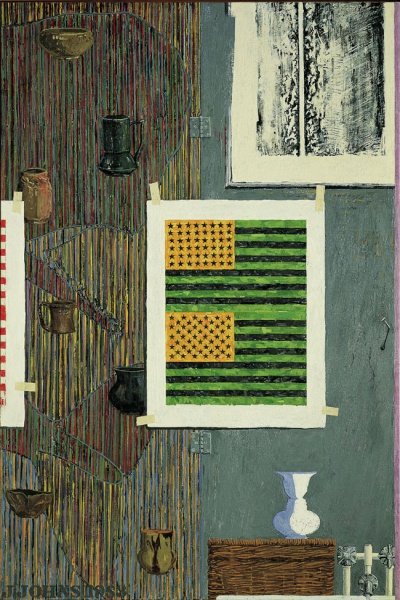It has been almost fifty years since Jasper Johns changed the course of art with his first one-man show, at the Leo Castelli Gallery in New York in 1958. American painting was dominated at the time by the powerful example of the Abstract Expressionists, such as Willem de Kooning, with his furiously splashed and scribbled depictions of women – looking like “melted Picassos”, as Picasso himself remarked – and Jackson Pollock, whose tangled skeins of dripped oil paint suggested the overspills of an agitated psyche. By contrast, Johns presented his audience with enigmatically deadpan images of straightforward objects – American flags, targets, maps, stencilled numerals – meticulously painted by hand. They seemed dumbfounding in their insolence, their bravado and their apparent banality.
Johns described his favoured motifs as “pre-formed, conventional, depersonalized, factual, exterior elements” and added that “I’m interested in things which suggest the world rather than suggest the personality.” With hindsight, his early work seemed to mark a decisive turn, away from the breast-beating introspection of Abstract Expressionism, and towards the stance of cool, ironic observation affected by the Pop Artists and the Minimalists. His art was seen as the hinge on which two quite distinct eras in art turned.
But over the years, Johns’ place in the canon of art history has come to seem anything but fixed. Now in his mid-seventies, he has gradually metamorphosed from the young iconoclast into the grand old man of American painting. His pictures sell for many, many millions of dollars; the literature on his art grows at a seemingly exponential rate; and museums all over the world vie with one another to exhibit him. Last week a new exhibition of his paintings, drawings, prints and works in more exotic media, opened at the Scottish National Gallery of Modern Art. Entitled “Past...

Past Things and Present: Jasper Johns Since 1983, at the SNGMA, Edinburgh, 2004
30-11-1999

